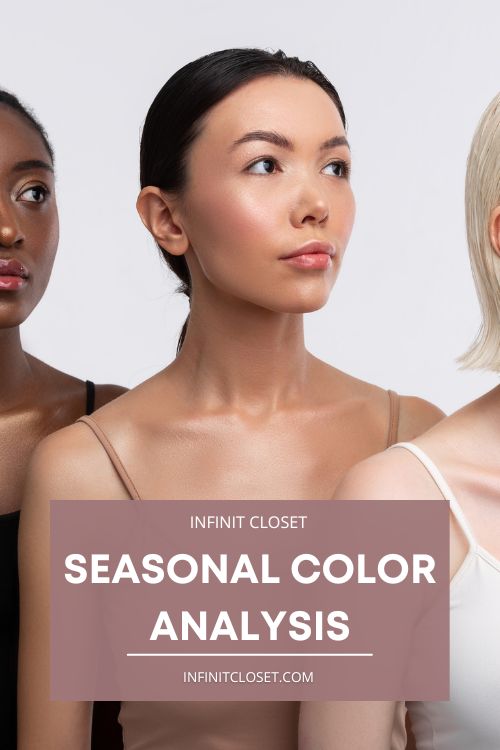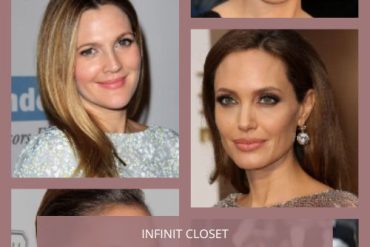Have you ever ordered clothing from an online shop only to be disappointed because it makes you look washed out or gaudy? The reason may be that your color season isn’t the same as the model you saw wearing the clothing on the online platform. You need to understand your specific color palette through the color seasons so that you can choose colors that flatter you. So, you might be asking, what color season am I? This guide will walk you through season color analysis and show you how to determine your color season.
Types of Color Seasons
You must first know the types of color seasons to determine which one you are. The process is known as seasonal color analysis based on skin tone, hair, and eye color. Your skin tone is either warm (yellow undertone) or cool (blue/pink undertone), and your hair is dark or light. The eyes can either be cool (vibrant green/gray/blue or violet) or warm (hazel/amber/brown). These tones categorize everyone into four seasons which are further narrowed down to 12 because each season has three variations.
Seasonal Color Analysis: Color Seasons and Their Variations
Here is the breakdown of the four color seasons:
Spring: Warm, Light, and Bright
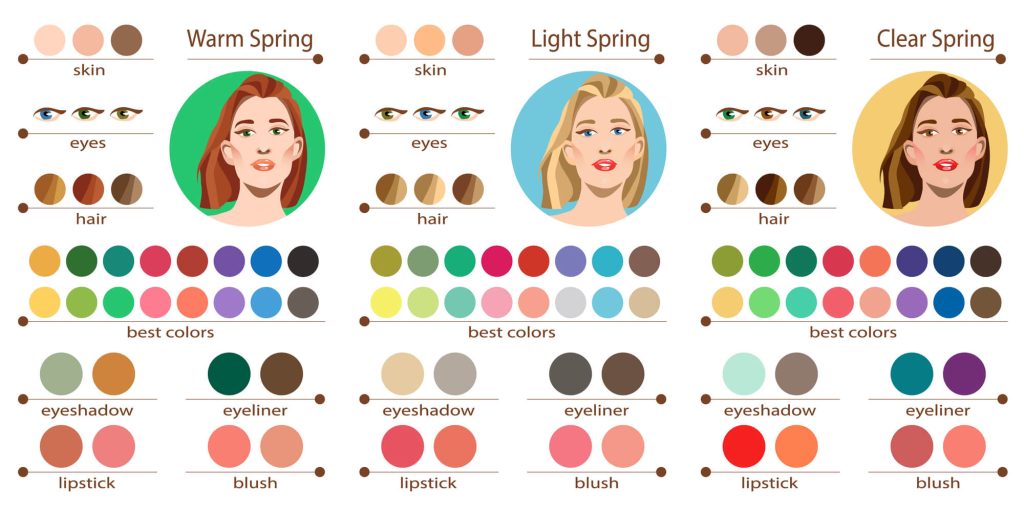
You’re a spring if you have hair ranging from golden blonde hair to light golden brown, giving you a warm and light appearance. The best colors for a True Spring are warm greens, orangey reds, yellows, and light brown shades ranging from tan to palest beige.
Bright Spring: This color season is a combination of bright and warm. Its prominent feature is clarity, which gives them a bright, fresh appearance.
True Spring: This palette is bright and sharp with no coolness. This color season looks fresh and glowing.
Light Spring: This spring color palette combines light and warmth. It has typical summer gentleness. The Light Spring palette goes well with people that have lighter eyes, skin, and hair.
Summer: Cool, Light, and Soft
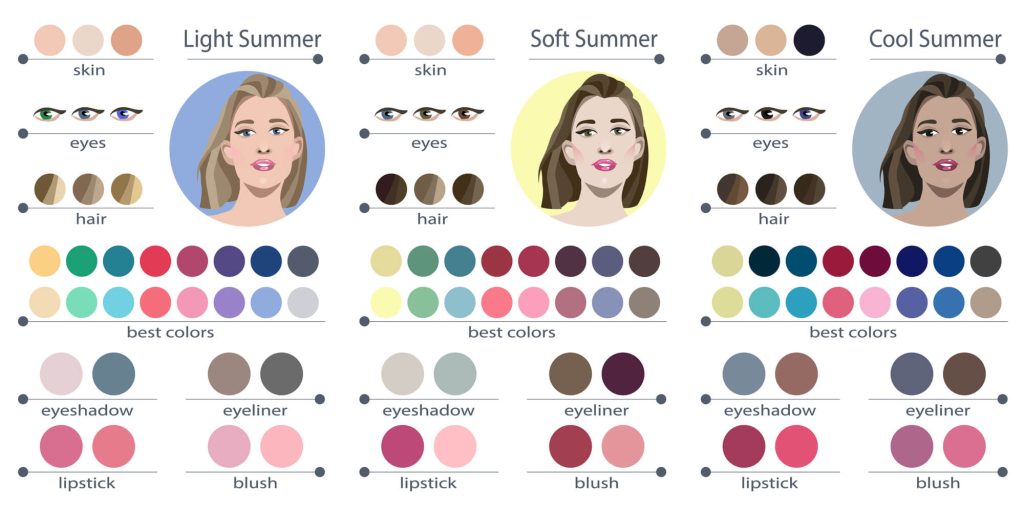
Your color season is summer if your skin tone is pink-toned with blue veins, your hair color is anything between ash blonde and light brown, and your eyes are soft with a touch of gray. Summer colors appear soft and look good in mid-pinks, beautiful grays, and blues ranging from denim to sky.
Light Summer: This variation is a combination of light and cool. It flows from spring which tints the tones hence slightly bright features.
True Summer: This palette includes cool and muted colors with a distinct lack of warmth. It is instead overlaid with gentle coolness.
Soft Summer: The Soft Summer palette has a lot of muted and gentle hues, giving it the softest coloring in the summer color family.
Autumn: Warm, Deep, and Soft

Autumn’s colors are warm and deep and best suited to people with rich brown, copper, and auburn hair. The eyes are brown, amber, or hazel and have skin that turns golden in summer. Your colors are soft and include but are not limited to mustard yellow, rust red, medium olive green, and camels.
Soft Autumn: This palette consists of muted, warm colors that give a soft but eye-catching look. The features such as hair are grayed out hence a blended appearance.
True Autumn: This autumn variation still has warm colors, but the hues are sharper compared to the other palettes this season. As a result, the features appear saturated.
Dark Autumn: This palette combines dark and warm, giving the features a bronze glow. This season’s color tints the skin and hair and makes the eyes neutral-warm.
Winter: Cool, Deep, and Bright
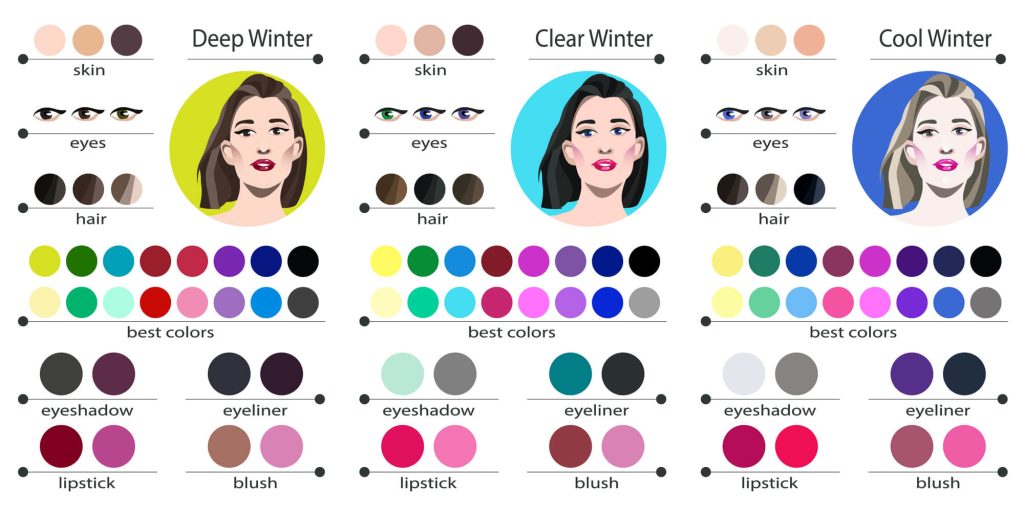
Your season color is winter if your hair is dark with clear, bright eyes. The skin tone can be deep or fair pink with blue veins. To stand out, you can choose true winter colors like emerald green, holly berry red, and deep violet. You can also opt for stark black and white.
Dark Winter: This winter palette is a combination of dark and cool. The deep coloring of key features makes it the darkest of the winter season.
True Winter: This variation blends cool and bright to give overlaid features a frost-like coolness. True Winters have brilliant features but with a cool aura.
Bright Winter: The bright winter palette combines bright and cool hues to give a clear appearance of features that can’t be overlooked. These bright colors make the skin tone saturated and the features more noticeable.
How to Determine Your Color Season
Determining the color seasons above can be challenging despite being necessary. Therefore, here is how to do it.
Step 1: Determine Your Undertones
First, determine whether your features, such as hair, eyes, and skin have cool or warm undertones.
Step 2: Count the Number of Color Features You Have
Next, count and tally the number of cool and warm features you possess. For instance, you may count two warm features and one cool one. If you have warm eyes and hair but cool skin, the higher number will determine where you lean. Note that you may have one cool and warm feature with a blend of natural skin. This case calls for going further and, perhaps, comparing it with a friend’s features.
Step 3: Determine Your Color Season
Determining your color season will be the next step. You can do so with the help of the description we gave in the previous section or using flow charts provided by color palette experts.
Step 4: Check Out Your Color Palette
Note that there are warm, cool, clear, deep, light, and soft color seasons. Therefore, narrowing down your color palette choice would be best because you can choose colors that will enhance your looks and build a wardrobe that complements your features.
Conclusion
Buying clothes or choosing one from your wardrobe can be challenging if you aren’t sure of your color season. The colors determined through seasonal analysis are essential if you want to stand out in your piece of clothing. Therefore, it will help if you use the information in this article to answer what color season you are. Doing so will make shopping or dressing much easier.

